Evaluating Environmental Impact: Plastic Vs Paper Cards Cost Comparison
Table of Contents []
- Plastic Vs Paper Cards Cost
- Understanding the Materials: Plastic Vs Paper Cards
- Cost Analysis: A Key Factor in Material Selection
- Design Considerations for Plastic and Paper Cards
- The Role of Technology in Card Functionality
- Environmental Considerations in Card Selection
- Evaluating Card Lifespan and Usage Needs
- Connecting with Plastic Card ID for Your Card Needs
Plastic Vs Paper Cards Cost
Welcome to Plastic Card ID , your go-to source for everything related to cards, whether plastic or paper. As experts in the field, we are here to provide insights and aid you in making informed decisions that best suit your personal or business needs. With a national service coverage and easy reach for orders or inquiries through our hotline at 800.835.7919 , be assured that help is just a call away.
Understanding the Materials: Plastic Vs Paper Cards
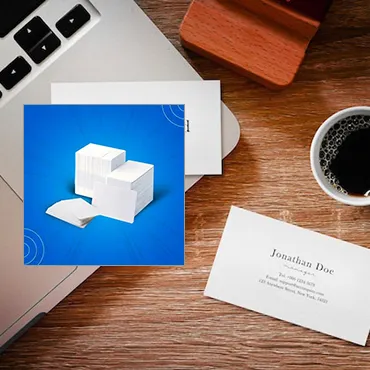
When it comes to choosing between plastic and paper cards, it's essential to understand the materials involved. Plastic cards are typically made from PVC (polyvinyl chloride), which offers durability and a professional finish. On the other hand, paper cards are generally crafted from cardboard or dense paper stocks, providing an eco-friendly alternative with a classic touch. Each material brings its own set of benefits and potential drawbacks, and it's our goal to guide you through these.
Considering the environmental impact, paper cards may seem like the clear winner. However, plastic cards offer longevity, which can reduce the need for frequent replacements. It's a balancing act between sustainability and practicality, and we're here to help tilt the scales in your favor.
The Robustness of Plastic
Yes, plastic cards are tough little things. They resist water, won't tear easily, and they tend to last quite a while in your wallet. This robustness means they can endure the daily wear and tear that comes with regular use. Whether it's a membership card, loyalty card, or just your average business card, going plastic could mean fewer reprints and replacements over time.
Here's a highlight of plastic's toughness:
- Water-resistant properties
- Difficulty to tear or bend irreparably
- Long lifespan in everyday conditions
Eco-Friendly Aspects of Paper
While we all strive to be more environmentally conscious, paper cards step up to the plate. They are typically made from biodegradable materials, which means they're easier on the planet when it's time to discard them. Moreover, with the rise of recycled paper stocks, the ecological footprint of your cards can be minimized even further.
Here are a few green points about paper:
- Biodegradable nature
- Opportunities for using recycled materials
- Potential for composting after use
Psychological Impact on Recipients
Have you ever thought about how a card feels in your hands? The material you choose can influence the psychological impact on the recipient. A sturdy plastic card can exude premium quality, while a textured paper card can evoke warmth and personal connection. The right choice can subtly influence how your brand is perceived.
Factors to consider for psychological impact:
- Perceived value based on card material
- Textural experience and its effect on brand image
- Color vibrancy and print quality on different materials
Cost Analysis: A Key Factor in Material Selection
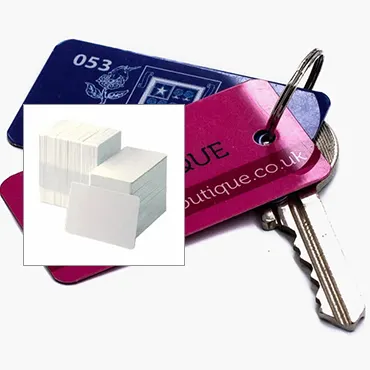
One of the most critical aspects in choosing between plastic and paper cards is the cost involved. We understand that every client has a budget, and we're here to ensure you get the most value for your investment. Plastic cards might come with a higher upfront cost due to production complexity, but their durability can lead to cost savings over time due to less frequent replacement needs.
Conversely, paper cards tend to be more affordable upfront, presenting a cost-effective solution, especially for short-term uses or bulk distribution. It's a matter of weighing the initial investment against the cards' intended lifecycle and purpose.
Upfront Costs: Paper Vs Plastic
As you gear up to make a decision, let's break down the upfront costs. Paper cards are less expensive to produce, and if you're distributing them en masse - think flyers or promotional handouts - they are economically sensible. Plastic cards require more sophisticated manufacturing processes, thus the higher initial price tag.
Considerations for upfront costs include:
- Manufacturing techniques and their impact on price
- Bulk order discounts that may be more accessible with paper cards
- Special features such as chip embedding in plastic cards that can increase costs
Long-Term Savings: Durability Matters
While paper cards may be budget-friendly at first glance, long-term considerations could tell a different story. A plastic card that remains intact after years of use is a testament to the saying, 'buy it nice or buy it twice.' In scenarios where cards are used frequently, replacing paper cards could see costs add up, offsetting the initial savings.
Here's why durability can lead to long-term savings:
- Greater resistant to the elements
- Less frequent need for replacements
- Consistent brand representation without the wear and tear
Return on Investment (ROI)
Evaluating the ROI is crucial, no matter what you decide. With plastic cards, a higher ROI might be achieved through the longevity and continuous brand exposure each card offers. Paper cards could yield a satisfying ROI in circumstances like a one-off event or a marketing campaign where immediate impact is key.
Points to ponder for ROI:
- Assessing how card usage fits into your broader marketing strategy
- Calculating the cost per impression for both materials
- Determining the value of durability versus initial savings
Design Considerations for Plastic and Paper Cards
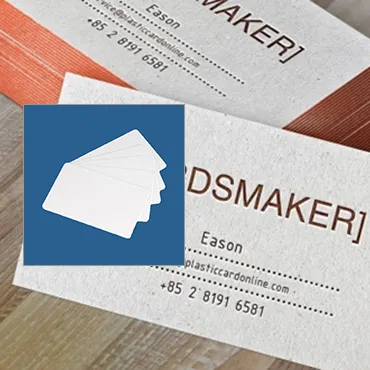
The design of your card is a direct reflection of your brand's image. When it comes to plastic cards, the sleek, shiny finish allows for high-quality graphics and vibrant color printing. Special effects like foil stamping or embossing are also possible, adding a touch of elegance and sophistication to the card.
Meanwhile, paper cards offer a more traditional and organic feel, which can be perfect for brands that want to project an eco-friendly or artisanal image. The textural variation in paper stocks can add a level of uniqueness to the design that plastic cards may not be able to match.
Color and Print Quality on Different Materials
The material you choose can greatly affect color and print quality. Plastic cards typically showcase colors with more brilliance and clarity. If your design involves detailed graphics or a vivid color scheme, plastic might be the way to go. On the other hand, paper can provide a softer, more natural look, ideal for designs that aim for a minimalist or rustic aesthetic.
Your design goals can impact this choice:
- Type of imagery and color palettes you plan to use
- Expected print clarity and color saturation
- Desired overall aesthetic and how it relates to material
Adding Special Features and Customization
Whether it's QR codes, magnetic stripes, or even RFID chips, plastic cards offer more versatility for incorporating technology. And if that's not enough, customization options such as unique shapes or transparent sections can make your plastic cards stand out even further.
Custom features could include:
- Technology integration for added functionality
- Custom shapes and sizes to enhance brand recognition
- Unique design elements like clear or frosted finishes
Texture and Tactile Experience
The tactile feeling of a card can make a lasting impression. Imagine running your fingers over a raised logo on a plastic card or the coarse texture of a premium paper card. These sensory experiences contribute to how recipients remember and think about your brand.
Sensory elements to consider:
- The feel of embossed or debossed elements
- The hand-feel of glossy versus matte finishes
- Textural contrasts such as smooth plastic and textured paper
The Role of Technology in Card Functionality
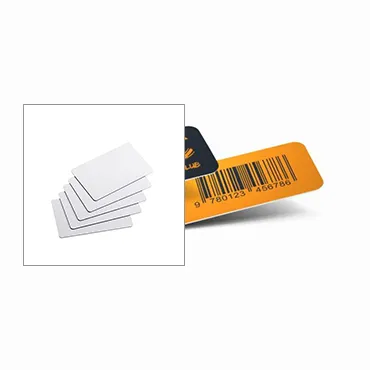
In an increasingly digital world, the functionality that your cards need to provide might sway your decision. Today's plastic cards can come equipped with smart technology, such as contactless features and data storage capabilities, making them more than just a branding tool.
Conversely, while paper cards might lack these tech integrations, they offer simplicity and ease of use, with less risk of technical malfunctions. It's worth considering the user experience and how your card will be utilized on a day-to-day basis.
Smart Cards and Data Storage
Plastic cards can double as tech gadgets. With options for embedding chips and magnetic stripes, they can store data and interact with devices. They can become keycards, loyalty cards that track points, or even digital wallets. This tech-forward approach can put you at the forefront of innovation in your industry.
Advantages of smart card technology:
- Convenience of contactless interactions
- Added security features such as encryption
- The ability to incorporate loyalty programs or other data-driven incentives
Quick and Easy Distribution with Paper Cards
When speed and immediacy are key, paper cards hold the advantage. They're quick to produce, easy to distribute, and perfect for events or promotions where the goal is maximum reach in minimal time. Plus, they're light and easy to transport, which is always handy.
Why paper wins on distribution:
- Efficiency in mass production and ease of handling
- Simplicity in design for a faster turnaround
- Ideal for direct mail campaigns or event handouts
Upgrading User Experience with Interactive Elements
Plastic cards offer the chance to elevate the user experience through embedded tech, while paper cards can also be interactive with QR codes or augmented reality triggers. These interactive elements can engage users in unique ways and provide value beyond the physical card itself.
Aspects of interactivity to explore:
- QR codes that link to digital content or promotions
- Augmented reality features that bring your card to life
- Chip technology for seamless transactions and access control
Environmental Considerations in Card Selection
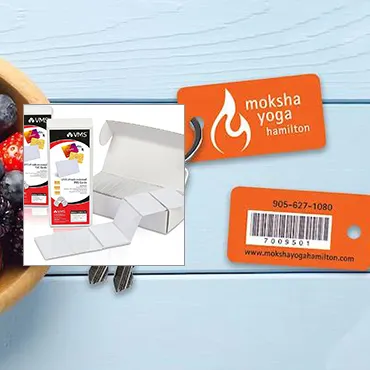
As a socially responsible company, environmental impact plays a big part in our decision-making process, and we know it does for you too. Plastic cards, while durable, are not easily recyclable and contribute to landfill waste. Paper cards may be the greener choice as they decompose faster and can often be made from recycled materials.
We are always exploring and supporting ways to make card production more sustainable, regardless of the material chosen. From using eco-friendly inks to promoting recycling programs, our dedication to the environment is unwavering.
Recycling and Sustainability Practices
For those leaning towards plastic, we encourage programs that help recycle old cards. And with paper, we highlight stocks that are not only recycled but also sourced from sustainable forests. By adopting responsible practices, you are not only making a choice that benefits your business but also contributes positively to our planet.
Steps towards sustainability include:
- Promoting recycling programs for plastic cards
- Choosing certified sustainable paper stocks
- Considering the full lifecycle impact of card production
Biodegradable and Plant-Based Options
Biodegradable plastic cards are on the rise, presenting an exciting middle ground between traditional plastic and paper. These cards break down more quickly in the environment, offering a compromise that's both durable and more eco-friendly. Similarly, the paper card market has seen innovation with seed-infused cards that actually grow into plants!
Innovative and eco-friendly options:
- Biodegradable plastics that lessen environmental impact
- Seed paper cards that promote growth and renewal
- Plant-based materials that offer a new frontier in card production
Green Manufacturing Processes
Our commitment to the environment extends to the manufacturing processes we support. By choosing printing facilities that utilize green energy or reduce emissions, we're doing our part to ensure that your card choices align with broader environmental goals. Responsible production is just one aspect of our comprehensive approach to sustainability.
We support green manufacturing by:
- Partnering with printers that use renewable energy sources
- Advocating for reduced waste and emissions in the production process
- Seeking out innovation in card material processing and disposal
Evaluating Card Lifespan and Usage Needs
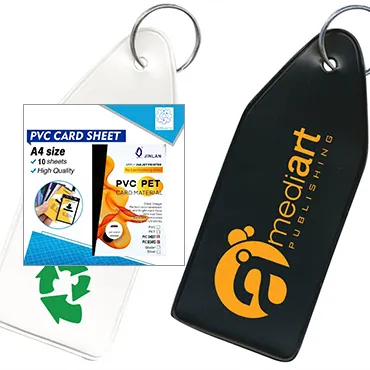
How long you need your cards to last, and what kind of punishment they'll endure, is a significant factor in the paper versus plastic debate. If you're in a sector where cards are scanned, swiped, or used outdoors, a plastic card's resilience becomes invaluable. For short-term promotions or single-use scenarios, paper cards can be just right.
At , we understand that each client has unique needs and considerations when it comes to card lifespan and usage requirements. We are equipped to provide solutions tailored to these specific needs, ensuring client satisfaction and optimal card performance.
Durability for High-Frequency Use
If you're running a loyalty program or issuing ID cards, you'll want something that doesn't fold under pressure-or in pockets. Plastic cards can handle being a daily companion, bouncing around in bags or being swiped through machines repeatedly.
For high-frequency use, consider:
- Resistance to physical stress
- How the card interacts with machines (swiping, scanning)
- Wear and tear from daily handling and environmental exposure
Single-Use and Short-Term Applications
For events, temporary access, or promotions, paper cards are practical and minimize waste. They do the job without the need for long-term durability, and you won't break a sweat over the cost of handing out hundreds-or even thousands-of cards.
Why paper works for short-term usage:
- Cost-efficiency for large volume printing
- Effective for a targeted impact during events or promotions
- Simplicity of disposal and potential for recycling post-use
Customization to Fit Purpose
Whether it's VIP passes for exclusive events or business cards that double as appointment reminders, customization can go a long way. Plastic cards offer more diverse custom features, but paper cards can surprise with creative folds, cut-outs, and embedded items like seeds or coupons.
Customization strategies include:
- Employing innovative designs to engage the recipient
- Choosing the right card type to serve multi-functional purposes
- Incorporating unexpected elements that delight users
Connecting with Plastic Card ID for Your Card Needs

No matter where you land in the plastic versus paper card debate, know that we at Plastic Card ID are here to support your choice. With experienced advice, a broad selection of card options, and a commitment to quality service nationwide, we're just a phone call away at 800.835.7919 . Feel free to reach out for any new orders or questions!
Our team is dedicated to helping you make the best choices for your specific needs. With us, you'll not only get premium-quality cards but also the insights and support to make your card selection a sure success. We serve everyone, everywhere, anytime.
Why Choose Plastic Card ID
Choosing us means you're opting for a partner who values quality, customer satisfaction, and informed decision-making. Our expertise spans across all aspects of card production, and we're eager to share that knowledge with you.
Why our clients trust us:
- Extensive knowledge of materials and manufacturing processes
- Dedication to providing eco-friendly options and sustainable practices
- Nationwide service with a personal touch and easy-to-reach assistance at 800.835.7919
Easy Ordering and Reliable Support
We've streamlined our ordering process to make it as simple and efficient as possible. Plus, our support doesn't end with your purchase; we're here to answer your questions, provide updates, and offer post-sale support to ensure you're completely satisfied.
Expect from us:
- A user-friendly ordering experience
- Consistent and reliable customer support
- Assistance and expertise just a call away at 800.835.7919
Our Commitment to Your Success
At Plastic Card ID , we understand that your success is our success. We're invested in providing products and services that enhance your brand, strengthen your client relationships, and support your business objectives. Partner with us for cards that truly make an impression.
Our promise to you includes:
- High-quality card production aligned with your brand values
- An in-depth understanding of plastic and paper materials to guide your choices
- A nationwide reach that ensures no client is out of our range of service, accessible via 800.835.7919
We invite you to join the multitude of satisfied clients who have chosen Plastic Card ID for their card needs. Embrace the confidence that comes with making informed choices, supported by a team that cares about your journey. Reach out today at 800.835.7919 to start the conversation.
Previous Page

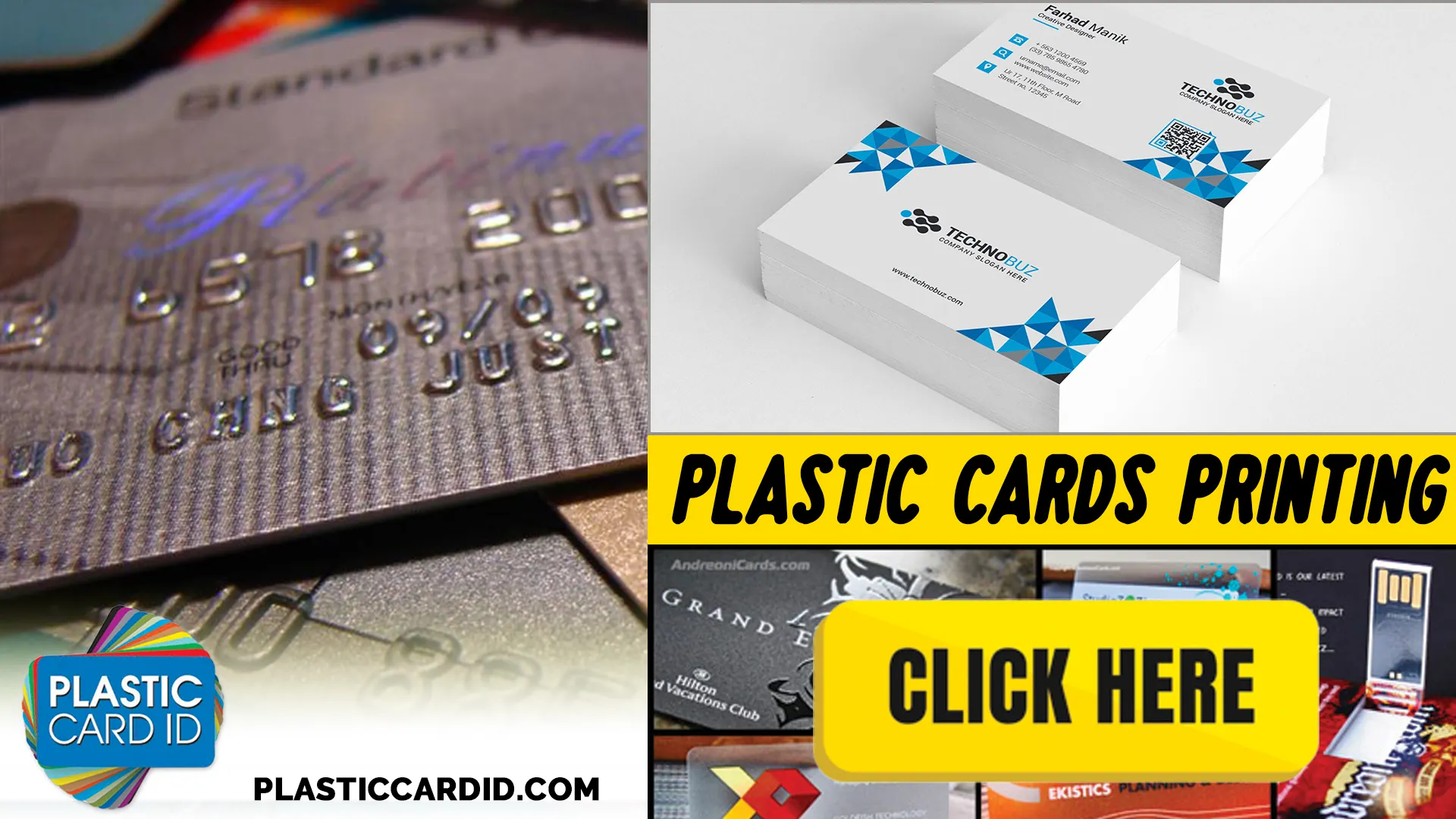
 Copyright © All rights reserved. Click here to view
Copyright © All rights reserved. Click here to view